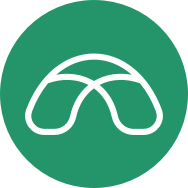Credit can be a confusing concept to navigate, especially when it comes to revolving credit. So, what is revolving credit? Revolving credit refers to credit that’s open-ended, meaning that you can continue to borrow and repay the borrowed amount over and over again. Some examples include credit cards, lines of credit, and home equity lines of credit.
Credit cards
Credit cards are the most common type. They offer convenience and flexibility, but can also lead to high-interest rates and debt if not managed properly. Lines of credit, on the other hand, typically have lower interest rates and can be used for a variety of purposes, such as home renovations or paying for unexpected expenses.
Home equity lines of credit
Home equity lines of credit (HELOCs) are a type of credit that are secured by the equity in your home. They can be a useful tool for financing major expenses, but they also come with the risk of potentially losing your home if you’re unable to make payments.
Overall, revolving credit can be a useful tool for managing your finances and building credit, but it’s important to understand the different types and their potential risks. Make sure to use credit responsibly and pay off your balances in full each month to avoid high-interest charges and potential debt.



